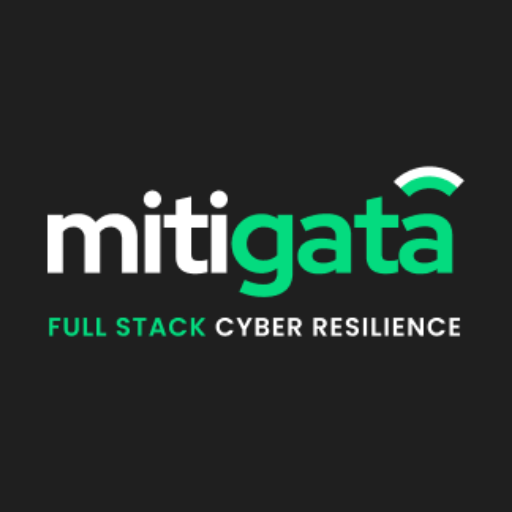IBM’s 2024 report shows the average cost of a data breach in India hit ₹195 million, the highest ever recorded.
For Indian organisations, the picture isn’t any brighter. Even more concerning, 68% of breaches involved human error or misconfigurations, often slipping past traditional security tools.
It’s a wake-up call for stronger, more connected detection and response systems.
That’s where Extended Detection and Response (XDR) becomes a game-changer. In this blog, we are going to help you understand the key features of XDR and how to choose the right one to support your business.
Why 800+ Businesses Choose Mitigata?

Mitigata is trusted by over 800+ B2B companies across India for its XDR services. Our approach goes beyond tools, offering a complete, fully supported solution that aligns with your organisation’s unique needs:
- Free Demo: See the system in action through real-world scenarios, so you know exactly how it works.
- 800+ B2B Companies Trust Us: Join a large community of businesses already secured with Mitigata.
- Cost-effective: Enterprise-grade protection without the high price tag.
- 24/7 Support: Our experts are available at any time, guiding you through alerts, setups, and incident handling.
- Easy Integration: Our XDR solutions connect seamlessly with your existing systems, reducing deployment time.
- No Hidden Costs for Training: Everything you need is included—no surprises.
- Personalised Solutions: Protection that aligns with your organisation’s risk profile.
- End-to-End Implementation: From procurement to deployment, monitoring, and fine-tuning, we manage the entire process.
Why Pay More for XDR? Secure Every Device for Just ₹1,000/device

What is Extended Detection and Response (XDR)?
XDR operates by combining monitoring and response capabilities for endpoints, networks, cloud, and applications into a shared ecosystem, rather than addressing this data in isolated departments.
Instead of responding to alerts from separate systems, XDR aggregates the data from each source, extracts patterns, and notifies your team of anomalous activity.
Complex attacks emerging in systems can be identified sooner, and false alerts can be significantly reduced. Your team can respond proactively to isolate the systems that are affected by attacks and remediate before they lead to any extensive damage.
In short, XDR removes blind spots, provides actionable information, and allows teams to focus on the more important task of preventing breaches, as opposed to responding to and cleaning up false alerts.
Key Features to Look for in an XDR Tool
These are a few of the important aspects that contribute to the efficacy of any XDR solution in real-life situations that you should look for:
- Cross-Layer Visibility
A strong XDR tool gives you a single view of the activity across endpoints, cloud environments, networks, and applications. You can follow the movement of a threat from one system to another to view the entire attack chain. This differentiates XDR from previous tools like traditional EDR or SIEM.
- Event Correlation and Smart Detection
Rather than sending thousands of alerts in isolation, XDR is able to analyse events and put them into context with one another. It uses analytics and pattern matching to connect clues to identify more complex attacks.
Not only does this remove alert fatigue, but it also allows the analyst to identify the real threat that needs immediate attention.
Learn how XDR defends your systems from start to finish in this detailed guide.
- Automated Response Actions
When XDR detects something suspicious, it automatically isolates infected endpoints, blocks IPs, and disables compromised accounts, etc. These rapid response actions help contain the attack and save valuable time for the security team to focus their efforts.
- Centralised Dashboard and Reporting
A suitable XDR tool should make your daily work easier, not harder. Your dashboard should give you a full picture of your environment, including an overview of incidents, live alerts, and compliance data.
5. Integration of Threat Intelligence
Threats in cyberspace are constantly emerging, so having an up-to-date threat intelligence capability within your XDR ensures you’re always ahead of the threats.
XDR identifies new attack patterns and shuts them down before they can cause damage. By leveraging global intelligence feeds, your system will be able to learn about events happening in real time and recognise new threat tactics trying to enter your network.
- Support Services for Compliance and Auditing
For regulated industries, the documentation and reporting can be just as tough as the security requirements themselves. XDR helps in providing logs, reports, and assisting with compliance requirements (for example, SEBI’s CSCRF, ISO, or GDPR) without the need for manual effort.
This simple, accurate data collection will accelerate the audit process.
800+ Businesses Rely on Mitigata XDR for End-to-End Security

How to Choose the Right XDR Solution for Your Business
When selecting XDR, consider how it integrates with your existing tools:
Proprietary XDR:
This kind of XDR is produced entirely by a single vendor, meaning all subsystems from detection to response are engineered to work together. The integration is simple, updates are managed effectively, and compatibility issues are not a concern.
Open XDR:
This type of XDR is meant to work with security tools from different vendors, enabling you to continue using your existing solutions. This flexibility enables you to protect your current security investments while still benefiting from centralised detection and response.
If you want to protect your existing investments, then look into an Open XDR option. If you want a comprehensive or fully centralised solution, then go with Proprietary.
Discover the top 10 XDR solutions in India and find the perfect fit for your business.
Response Speed is Automation
Good XDR examples leverage automation for speed. When a threat is detected in good XDR, it can automatically do any or all of the following:
- Quarantine affected devices
- Block bad communications
- Forceful password reset
A quick and automated response is key to limiting the impact of an attack.
Practicality and Future-Proof Growth
The solution should be simple to operate for your very own team, and it should be ready for growth in the future:
- Easy to Use: All threat data, alerts and controls should be displayed in one dashboard, so that analysts can respond quickly, without having to constantly switch screens
- Scalable: As you plan to grow your business and add more data or cloud services, the XDR should be able to handle these changes easily.
Launch XDR in Days, Not Months

Conclusion
XDR is not an option anymore; it’s a non-negotiable tool as it provides the best way to Detect, Investigate, and Mitigate threats across your entire IT environment.
From deployment to monitoring and reporting, Mitigata manages the full process so your team can focus on keeping your business secure.
Get your free demo today and see how Mitigata’s XDR services can protect your organisation!

